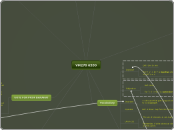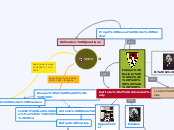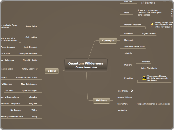Schedule Attached
Terminology
Hamiltonian vs Lagrangian
Both are functions representing all possible states of the position and motion/momentum at a point in time.
Hamiltonian H(q,p,t) function of momentum
Lagrangian L(q,q dot, t) function of velocity
Eigenvalues
An eigenvalue is a known quantity of either position or momentum in a matrix of probability.
The picture represents the infinite possible states that could occur and the red box is the known quantity, the eigenstate of the object. The wave function collapses to an eigenvalue.
Notes:
- Can be an eigenvalue in one of two physical quantities known as eigenstates (position or momentum)
- Eigenvalue must be measured to be identified
An eigenvalue is a known quantity of either position or momentum in a matrix of probability.
The picture represents the infinite possible states that could occur and the red box is the known quantity, the eigenvalue.
Notes:
- Can be an eigenvalue in one of two physical quantities known as eigenstates (position or momentum)
- Eigenvalue must be measured to be identified
Perturbing Hamiltonian
A slight disturbance is applied to the system. The perturbing hamiltonian is a mathematical approximation scheme which compares the behaviour of the complicated system to a simpler "known" system result and allows a prediction of the behaviour of the system
Math
Partial Derivatives
Function in 3-D
Create function which represents the rate of change for one variable while keeping all others constant
IQT Conference 2015
Quantum Spin
Light/Atoms can be quantum or classical
Spin is only quantum
Hydrogen all has same size, mass, spin
Stern Gerlach Experiment has no classical explanation
Wave-Particle Duality Revisited
Beam Splitter
Only experiment that peer reviewed journal will accept as proof of single photon source
Only zero peak in the middle will prove there is only one photon produced (small peak indicates noise)
2 Golden Rules of Quantum Mechanics
Quantum Coin Flip
Experiment
Any pair of polarizers at 90deg to each other allows no light through
Polarization of Light
How do you get one photon?
Light is harmonic oscillator with a certain amount of energy (based on Planck) Therefore, whatever energy you detect, divide by planck's number and get number of photons
Getting good at lowering the voltage with extreme position
For light going through polarizer:
Iout=Iincos2theta
Classic - Possibilities - Goes through or doesn't go through
cos^2(theta) represents the probability that it will go through
Each photon has that probability but the entire probability would only be seen after a large number of photons
Introduction
Quantum mechanics is easy as long as you give up your interpretation of reality
Rule 1 : You can be here, there, here and there
Rule 2 : Rule 1 works as long as you don't look (measure)
Everytime you measure, you change the information you are trying to get
What is it?
Rule: Constant transition rate (probability of changing eigenstate per unit time) from one eigenstate to another eigenstate in a continuum, effected by a perturbation
Wikipedia
Keynote: Raymond LaFlamme, IQC Director
Biography:
Subtopic
Quantum clocks - If you started two clocks at the beginning of time. They would be off at most be 3 s (accuracy of 1 part in 10^17)
Everyone is trying to prove quantum mechanics wrong but...
nothing yet. IQC is working on Control
Everything that you encrypt today will be decrypted in the future. Thank you Quantum computing.
The only reasons we won't be able to build a quantum computer is:
1) The engineering hurdles are too big
2) Quantum mechanics is not the right theory to describe reality (this would be pretty amazing in itself - push in the right direction)
The limit of classic computers is about 30-40 quantum bits
1 regular bit can be represented by 2 states (0 or 1)
1 quantum bit can be represented by an infinite number of states ????
Deterministic - 0 or 1 - must be one of them
Quantum - 0 or 1 or a probability of states in between
Quantum Information - Language to talk to atoms and molecules
Qubits - Can be 0 or 1 or (infinite states between 0 and 1)









